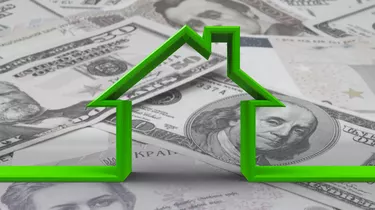
Proper use of deductions on business property can save you significant money at tax times. One major deduction for business properties is depreciation. This accounts for the decline in value of the property over time. Capital improvements, such as a new roof, are depreciated independently of the building itself.
Depreciation Definition
Video of the Day
Depreciation is an accounting term that tracks the decline in value of an asset over time. While this may seem counter-intuitive as real estate is generally an appreciating asset, depreciation recognizes that a property is less useful as it ages. To claim depreciation you must own the property, use it for business, be able to determine its useful life, or recovery period, and expect it to last longer than one year.
Video of the Day
Straight-Line Depreciation
Straight-line depreciation is the most straightforward method for calculating a new roof's depreciation. Once the roof is in place, it begins to lose its value. The depreciation is the same for each year of the roof's useful life. Since the roof is newer than the structure itself, the roof will technically lose its value after the building. While this is fine for accounting purposes, it won't convince a buyer to purchase a decrepit building with a newer roof.
Recovery Period
Straight-line depreciation is calculated based on the Modified Accelerated Cost Recovery System (MACRS) utilized by the Internal Revenue Service. MACRS dictates the recovery period of a piece of real estate based on its primary use. You will depreciate a residential property over 27.5 years and a commercial property over 39 years. These figures will be used to calculate the depreciation.
Depreciating a New Roof
A new roof is considered a capital improvement and, therefore, subject to its own depreciation. For example, if you've owned a rental property for 10 years before you installed a new roof, you can depreciate the roof over 27.5 years, even though you have 17 years of depreciation left on the property. For example, if the new roof costs $15,000, divide that figure by 27.5. This means the roof depreciates $545.46 every year. You must also take into account the month the roof is installed for the first year. For example, if you install a new roof in August, you can claim four-and-a-half months of depreciation for the first year. Divide the yearly depreciation of $545.46 by 4.5. You can claim $121.24 for that first year.